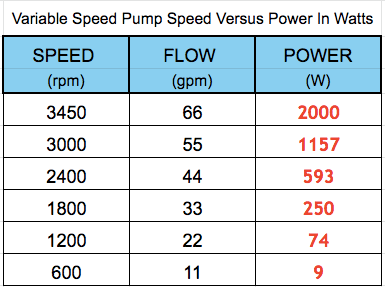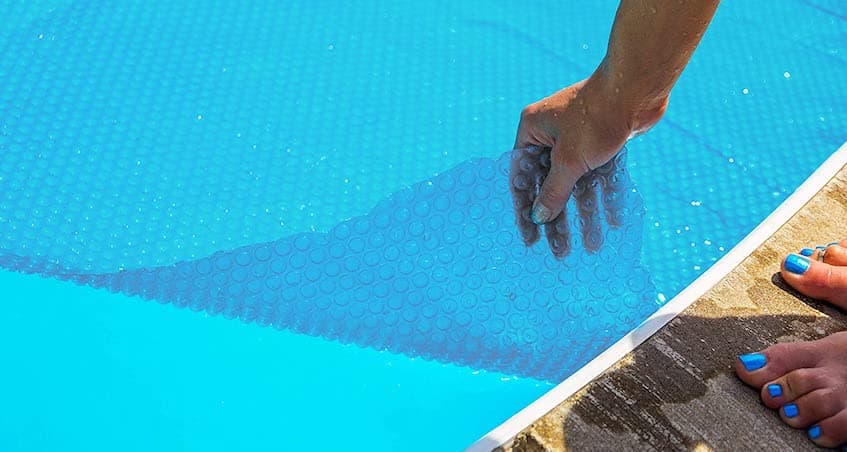There’s a new law on its way and it will affect many pool owners. If you’re planning to treat your pool to a new pump at the start of 2021 pool season then you’ll need to read this and make yourself aware of what’s coming and what’s changing.
The law may not directly affect your immediate buying decision, but when you find out the money you can cut from your utility bill simply by being pro-active and installing a VS pump then you’ll probably go right ahead and buy one.
So what’s this new requirement?
Well as from July 19 next year 2021 all new or replacement pool pumps over 0.711 Hydraulic Horse Power will need to be Variable Speed.
The DOE’s Energy Efficiency and Renewable Energy Office has spent plenty of time, effort and money consulting with pump manufactures and utility suppliers to formulate this new law. It’s actually a “win win” law for pool owners and the environment and it was way past time coming.
The new “variable speed pump law” has been talked for years now and finally it’s just round the corner.
Do You Need To Buy A New VS Filter Pump
Not right away. But if your in-ground pool pump is larger than o.711 HHP and needs replacing after the law comes into effect you’ll need to install a VS pump.
Variable speed pumps are pretty pricy items but with the massive savings on your utility bill you’ll probably get your money back in just single pool season. Buy one on credit and your savings on electricity will easily pay the credit company repayments. Nice!!
Just Install A Variable Speed Pump Anyway
It’s a bit of a “no brainer”. Your old single or dual speed pump has been costing you a bundle to keep the pool clean and clear. A single speed pump is either full on or off with a variable speed pump you can match the pump speed to the circulation task its doing. That’s where the massive energy cost savings come from. .
A single speed pump runs at 3450 RPM all the time and you’ll see from the table below just by reducing RPM by 450 your energy costs are almost cut in half.

For more details of how to cut your pool related energy bills here >>
We’ve written a full review guide with plenty of tips to find the best variable speed pump to suit your installation. You can find it here >>.
New Pump Efficiency Measurement Rules
After July 19, 2021 manufacturers are required to publish WEF and THP information on the pump rating label. These are helpful numbers when you know what they mean:
Weighted Energy Factor (WEF)
This lets the owner know how many KWh of energy is required to move a volume of pool water through the pump. Finally here’s a number that’s easy to understand. If a pump is rated at a 7500 WEF it means it costs one KWh to pump 7500 gallons.
Total Horse Power. (THP)
Unlike HHP and WEF Total HorsePower is pretty difficult to visualise. It’s the HorsePower multiplied by a mysterious number called Service Factor. We explain a little more below.
Hydraulic HorsePower (HHP)
Basically this tells us how the volume of water is being pumped into the pool. A pretty basic thing to know, but in the past it’s often been a hard to find number on some single speed pump manufacturers literature. Variable speed pumps all come with graphs making it clear what volumes are being pumped at various pump revolutions.
How To Find The THP Of Your Pump
Calculating the Hydraulic Horse Power of the pump is a tad confusing to many pool owners but it’s easy enough. It’s simply multiplying HorsePower by Service Factor to find Total HorsePower.
HorsePower X Service Factor = Total HorsePower.
Let’s look at an example. A 0.75 HP pump which has a Service Factor of 1.5 gives a Total HorsePower of 1.125. That means you’ll need to fit a variable speed pump when the old one needs replacing.
What’s Service Factor And Where Can I Find It
Generally shortened to SF it’s on the pump pump label with the other manufacturers technical data.
This is a much misunderstood and confusing number even for some “ pool professionals”.
It’s hardly surprising it’s confusing when one manufacturers 1.00 HP pool pump with a SF of 1.75 has the same volume output as a 1.75 HP pump with a SF of 1.00 from another.
Of course pool designers will know this but the average pool owner may not. Help is at hand, under the new regulations manufacturers are now required to publish their pump’s performance curves so buyers can clearly see the volume of water the pump is capable of moving per hour. Unbelievably these basic facts have been hard to find or hidden by some well known brands.
Given that many folks think bigger is better it’s been a great marketing ploy to advertise a pump at 1.65 when in fact it has the same volumetric output of some 1.00 HP pumps.
Now it’s best just to think of Service Factor as a safety factor. The service factor horsepower is how many more revs the motor can stand without overloading it. So a pump with 15 % power reserve will have a service factor of 1.15 and with a 50% reserve a service factor of 1.50.
What’s Not Affected By The Pool Pump Law
The new law is generally aimed at filter pumps running in in-ground pools.
So exempted from the law are pumps dedicated to powering or boosting water features, automatic pool and spa cleaners, integral sand and cartridge filter pumps. Pumps manufactured and specifically labeled for above ground pools are also not covered.











